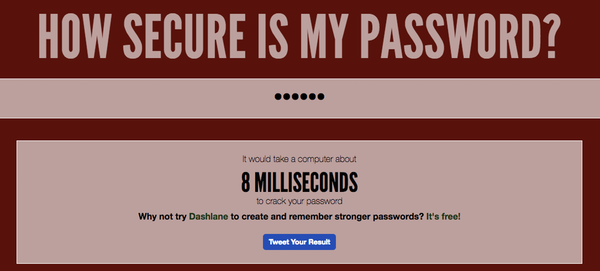If your password looks like “123456”, “azerty”, “password” or “iloveyou” then get ready to change it. Your accounts are far from secure.
Sometimes it is very easy for malicious people to discover a password, and when this happens, it is a direct entry to your personal data.
To avoid such a situation, it is essential to strengthen your password, and here is how to do it.
1. Create several passwords
Many of us use a single password for all our accounts in order to remember them.
However, this is a practice to be avoided because if someone were to discover your password he would have access to all your data without difficulty.
To avoid being hacked in cascade, use a unique password for each account.
2. Use a password generator
Easy solution, the password generator will provide you with a succession of random letters and numbers, difficult to remember of course, but also difficult to hack.
Dashlane is a recognized password generator that gives you the possibility to choose the length of the password. You can even choose whether or not to include letters, numbers and symbols.
3. Focus on length
If you don’t want to use a password generator but prefer to create it yourself, bet on the length.
This means that you should insert more than 10 characters, 12 and 14 being good averages.
The longer your password, the more complicated it will be to guess.
4. Vary the characters
Beyond the number of characters, their type is also important.
Ideally, your password should contain 4 different character types:
- Upper case letters
- Lowercase letters
- Numbers
- Special characters
Don’t hesitate to mix them well to get a random effect. Because….
5. Prefer the random
Your password should not have any special meaning such as a date, a nickname, your dog’s name, a logical sequence of numbers and letters, etc.
Choose a random password that doesn’t mean anything.
6. Change your passwords
For more security, it is recommended to change your password regularly, especially in companies when they give access to sensitive data.
If someone leaves your company or if you stop working with a provider who has access to some of your accounts, change your passwords quickly.
7. Remembering passwords without writing them down
Once you’ve created your password in a way that makes it secure, you realize that it’s hard to remember. Especially since you have several if you followed tip #1.
Our reflex would be to write them down in a notebook, in our smartphone, in a text file… This is a… very bad idea! Unless you want your passwords to be easily stolen…
So how do you do it? You can use your memory or…
8. Use a password manager.
A password manager is a database in which you can securely store your logins and passwords. To access it, you will of course have to enter a password, but it will be the only one you need to remember.
Keepass is a very serious password manager whose security has been evaluated by the French National Agency for Information Systems Security (ANSSI).
Bonus: test your password
To find out if your password is good enough, you can test it at How Secure is my Password?
You’ll see how long it would take a computer to crack your password and you’ll even get personalized tips on how to make it stronger.
